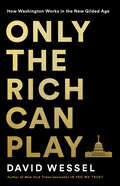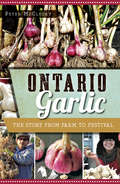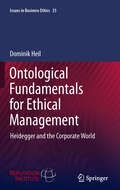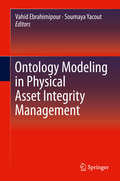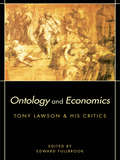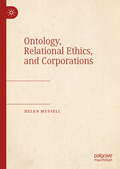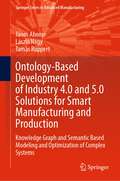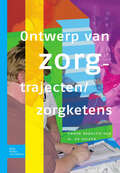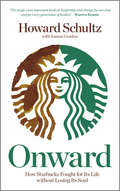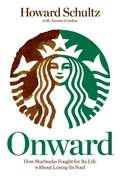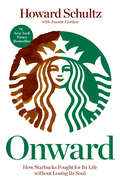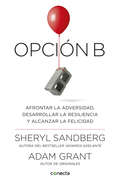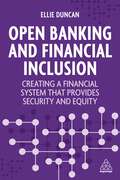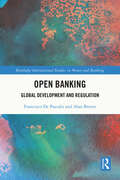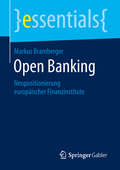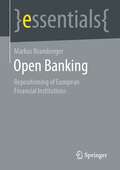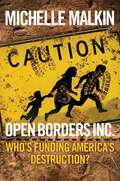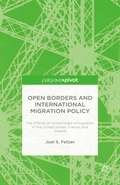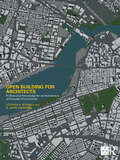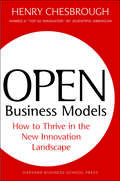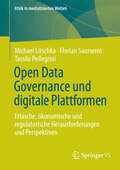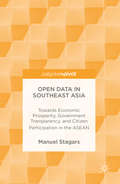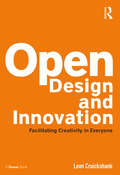- Table View
- List View
Only the Rich Can Play: How Washington Works in the New Gilded Age
by David WesselIn a Winners Take All meets This Town narrative, a New York Times bestselling author tells the story of the creation of a massive tax break, in which political and economic elites attend to the care and feeding of the super-rich, and inequality compounds.David Wessel's incredible tale of how Washington works-and why the rich keep getting richer-starts when a Silicon Valley entrepreneur develops an idea intended as a way to help poor people that will save rich people money on their taxes. He organizes and pays for an effective lobbying effort that pushes his idea into law with little scrutiny or fine-tuning by congressional or Treasury tax experts-and few safeguards against abuse. With an unbeatable pair of high-profile sponsors, bumper-sticker simplicity and deft political marketing, the Opportunity Zone became an unnoticed part of the 2017 Trump tax bill.The gold rush followed immediately thereafter.David Wessel follows the money to see who profited from this plan that was supposed to spur development of blighted areas and help people out of poverty: the Las Vegas strip, the Portland (Oregon) Ritz-Carlton, the Mall of America, and self-storage facilities-lucrative areas where the one percent can park money profitably and avoid capital gains taxes. And the best part: unlike other provisions for eliminating capital gains taxes (inheritance, for example) you don't have to die to take advantage of this one.Wessel provides vivid portraits of the proselytizers, political influencers, motivational speakers, consultants, real estate dealmakers, and individual money-seekers looking to take advantage of this twenty-first century bonanza. He looks at places for which Opportunity Zones were supposedly designed (Baltimore, for example) and how little money they've drawn. And he finds a couple of places (Erie, PA) where zones are actually doing what they were supposed to, a lesson on how a better designed program might have helped more left-behind places. But what Wessel reveals is the gritty reality: The dark underbelly of a system tilted in favor of the few, with the many left out in the cold
Onshore Oilfield Surface Facilities: Process Safety Engineering Guide
by Kun FangThis book focuses on oil and gas industry to systematically summarizes the safety production operation, design code and standards, and advanced practice. It aims to provide guidance for the safety engineering process of onshore oilfield surface facilities. It is suitable for engineers engaged in the design of onshore oilfield surface facilities and can also be reference to researchers in related fields. The basis of English translation of this book, originally in Chinese, was facilitated by artificial intelligence. The content was later revised by the author for accuracy.
Ontario Garlic: The Story from Farm to Festival
by Peter MccluskyThe taste of Ontario garlic is as rich and varied as its history. Used mainly for medicinal purposes in the nineteenth century, people turned up their noses at the aromatic bulb as it became associated with new immigrants. The once acceptable ingredient became undesirable in church and school--kids who smelled of garlic were sent home. Pioneering chefs, farmers and a wave of cultural diversity have brought the zesty allium into the mainstream, making it a gourmand's go-to spice, celebrated at nine festivals across the province. Toronto Garlic Festival founder Peter McClusky serves up garlic's long journey from central Asia to its now-revered place in the hearts and dishes of Ontarians. Growing tips and forty recipes bring Ontario garlic from farm to festival to feast.
Ontological Fundamentals for Ethical Management: Heidegger and the Corporate World
by Dominik HeilThe book develops a philosophical foundation to the field of management education using the work of Martin Heidegger as a guiding philosophy. It asks the questions 'what is a corporation?' and 'what is corporate management?' These two questions are foundational for management thought in general and management ethics in particular. Most other academic fields are in some way defined and guided by a philosophical discourse. This philosophical discourse is largely missing in the field of management thought and education. Without this foundation it can never be clear what actually belongs into a certain academic discipline and what does not. It also therefore lacks a sound and well articulated ontological foundation critical for developing approaches to ethical management. This book seeks to fill this gap and consequently represents an interdisciplinary effort between the academic field of management/business administration and philosophy, which is vital for business ethics. Intended as required reading for an elective on philosophy of management that is offered annually at the Wits Business School / University of the Witwatersrand / Johannesburg. The structure of the course will be largely based on the structure of the book.
Ontology Modeling in Physical Asset Integrity Management
by Soumaya Yacout Vahid EbrahimipourThis book presents cutting-edge applications of, and up-to-date research on, ontology engineering techniques in the physical asset integrity domain. Though a survey of state-of-the-art theory and methods on ontology engineering, the authors emphasize essential topics including data integration modeling, knowledge representation, and semantic interpretation. The book also reflects novel topics dealing with the advanced problems of physical asset integrity applications such as heterogeneity, data inconsistency, and interoperability existing in design and utilization. With a distinctive focus on applications relevant in heavy industry, Ontology Modeling in Physical Asset Integrity Management is ideal for practicing industrial and mechanical engineers working in the field, as well as researchers and graduate concerned with ontology engineering in physical systems life cycles.
Ontology and Economics: Tony Lawson and His Critics (Routledge Advances in Heterodox Economics)
by Edward FullbrookTony Lawson has become a major figure of intellectual controversy on the back of juxtaposing two relatively simple and seemingly innocuous ideas. He has argued firstly that success in science depends on finding and using methods, including modes of reasoning, appropriate to the nature of the phenomena being studied, and also that there are important differences between the nature of the objects of study of natural sciences and those of social science. This original book brings together some of the world's leading critics of economics orthodoxy to debate Lawson's contribution to the economics literature. The debate centres on ontology, which means enquiry into the nature of what exists, and in this collection scholars such as Bruce Caldwell, John B. Davis and Geoffrey M. Hodgson present their thoughtful criticisms of Lawson's work. Lawson himself presents his reactions to these criticisms, with full chapter replies to each of the scholars included. This book is particularly useful for students and researchers concerned primarily with methodology and future development of economics. It is also relevant to the concerns of philosophers of science and to all social scientists interested in methodological issues.
Ontology, Relational Ethics, and Corporations
by Helen MussellThis book offers a unique exploration and analysis of social responsibility and associated ethical concepts used by business and financial organizations. Mussell lays out the argument that a realist analysis of social responsibility reveals caring relations underpinning this ethical behavior. The combination of a realist social ontology with contemporary relational care ethics provides the theoretical framework needed to successfully explore the ethics of social responsibility. She then applies this realist caring relations argument to three specific contexts in which social responsibility is explicitly evident - including corporate social responsibility, socially responsible investment, and the legal concept of the fiduciary. By tracing the historical development of each concept – including how economic methodology has influenced interpretations and practice – a complex picture emerges, showing how ethics, economic theory, and political theory intersect. This is an insightful work of philosophically informed contemporary political economy, analyzing the evolution and connection of key ethical concepts widely used by organizations.
Ontology-Based Development of Industry 4.0 and 5.0 Solutions for Smart Manufacturing and Production: Knowledge Graph and Semantic Based Modeling and Optimization of Complex Systems (Springer Series in Advanced Manufacturing)
by János Abonyi László Nagy Tamás RuppertThis book presents a comprehensive framework for developing Industry 4.0 and 5.0 solutions through the use of ontology modeling and graph-based optimization techniques. With effective information management being critical to successful manufacturing processes, this book emphasizes the importance of adequate modeling and systematic analysis of interacting elements in the era of smart manufacturing. The book provides an extensive overview of semantic technologies and their potential to integrate with existing industrial standards, planning, and execution systems to provide efficient data processing and analysis. It also investigates the design of Industry 5.0 solutions and the need for problem-specific descriptions of production processes, operator skills and states, and sensor monitoring in intelligent spaces. The book proposes that ontology-based data can efficiently represent enterprise and manufacturing datasets. The book is divided into two parts: modeling and optimization. The semantic modeling part provides an overview of ontologies and knowledge graphs that can be used to create Industry 4.0 and 5.0 applications, with two detailed applications presented on a reproducible industrial case study. The optimization part of the book focuses on network science-based process optimization and presents various detailed applications, such as graph-based analytics, assembly line balancing, and community detection. The book is based on six key points: the need for horizontal and vertical integration in modern industry; the potential benefits of integrating semantic technologies into ERP and MES systems; the importance of optimization methods in Industry 4.0 and 5.0 concepts; the need to process large amounts of data while ensuring interoperability and re-usability factors; the potential for digital twin models to model smart factories, including big data access; and the need to integrate human factors in CPSs and provide adequate methods to facilitate collaboration and support shop floor workers.
Ontwerp van zorgtrajecten/zorgketens
by Roelof Ettema, Michel Jansen, Pieter Vos, Juul Ogtrop and Roland SandeMarlou KuiperDe afstemming tussen zorgvraag en zorgaanbod vraagt van beleidsmedewerkers, innovatoren, adviseurs, medisch en verpleegkundig specialisten, paramedici, en maatschappelijk werkenden, dat zij in staat zijn zorgvragen vanuit verschillende perspectieven te beoordelen. De zorgvraag moet in het licht van het bestaande aanbod en de bestaande wet- en regelgeving gewogen worden zodat een passend zorgtraject ontworpen kan worden. Dat zorgtraject moet niet alleen duurzaam zijn, maar ook evidence based, aantrekkelijk voor patiënt en hulpverlener en financieel verantwoord. Dit boek levert een bijdrage aan de kennis en methoden voor het ontwerpen van passende zorgtrajecten.
Onward
by Howard Schultz Joanne GordonIn 2008, Howard Schultz, the president and chairman of Starbucks, made the unprecedented decision to return as the CEO eight years after he stepped down from daily oversight of the company and became chairman. Concerned that Starbucks had lost its way, Schultz was determined to help it return to its core values and restore not only its financial health, but also its soul. In Onward, he shares the remarkable story of his return and the company's ongoing transformation under his leadership, revealing how, during one of the most tumultuous economic times in history, Starbucks again achieved profitability and sustainability without sacrificing humanity. Offering readers a snapshot of a moment in history that left no company unscathed, the book zooms in to show, in riveting detail, how one company struggled and recreated itself in the midst of it all. The fast paced narrative is driven by day-to-day tension as conflicts arise and lets readers into Schultz's psyche as he comes to terms with his limitations and evolving leadership style. Onward is a compelling, candid narrative documenting the maturing of a brand as well as a businessman. Onward represents Schultz's central leadership philosophy: It's not just about winning, but the right way to win. Ultimately, he gives readers what he strives to deliver every day- a sense of hope that, no matter how tough times get, the future can be just as or more successful than the past, whatever one defines success to be. "Through the lens of his personal leadership journey, with all of its dizzying ups and agonizing downs, Howard Schultz has written, with aching honesty and passion, the single most important book on leadership and change for our time and for every generation of leaders. This book is not just recommended reading, it's required." Warren Bennis, Distinguished Professor of Business, University of Southern California, and author of the recently published Still Surprised: A Memoir of a Life in Leadership "[This] sequel to the founding of Starbucks is grittier, more gripping, and dramatic, and [Schultz's] voice is winning and authentic. This is a must-read for anyone interested in leadership, management, or the quest to connect a brand with the consumer." Publishers Weekly
Onward: How Starbucks Fought for Its Life without Losing Its Soul
by Howard SchultzSchultz's story of how he transformed a failing company back to sustained, profitable growth. He offers readers an extraordinarily intimate look at his daily decision-making process, from closed-door planning sessions in Seattle, to conversations with coffee farmers in Rwanda, to investor presentations in New York during the worst of the economic turmoil.
Onward: How Starbucks Fought for Its Life without Losing Its Soul
by Howard Schultz Joanne GordonIn this #1 New York Times bestseller, the CEO of Starbucks recounts the story and leadership lessons behind the global coffee company's comeback and continued success.In 2008, Howard Schultz decided to return as the CEO of Starbucks to help restore its financial health and bring the company back to its core values. In Onward, he shares this remarkable story, revealing how, during one of the most tumultuous economic periods in American history, Starbucks again achieved profitability and sustainability without sacrificing humanity. Offering you a snapshot of the recession that left no company unscathed, the book shows in riveting detail how one company struggled and recreated itself in the midst of it all. In addition, you’ll get an inside look into Schultz's central leadership philosophy: It's not about winning, it’s about the right way to win. Onward is a compelling, candid narrative documenting the maturing of a brand as well as a businessman. Ultimately, Schultz gives you a sense of hope that, no matter how tough times get, the future can be more successful than the past.
Opción B
by Sheryl Sandberg Adam GrantBasado en su propia experiencia, Sheryl Sandberg, directora de operaciones de Facebook y autora del bestseller Vayamos adelante, firma junto con Adam Grant, profesor de Wharton y autor de Originals, un libro práctico e inspirador sobre la superación. Después de la repentina muerte de su marido, Sheryl Sandberg creyó que ni ella ni sus hijos podrían volver a ser felices. «Estaba en "la nada"», escribe, «en un vacío inabarcable que inunda el corazón y los pulmones, y merma la capacidad para pensar e incluso para respirar.» Su amigo Adam Grant, psicólogo en Wharton, le explicó que hay unos pasos concretos que podemos dar para recuperarnos y reponernos de las experiencias que nos destrozan la vida. No nacemos con una cantidad determinada de resiliencia, sino que ésta es un músculo que todos podemos desarrollar. Opción B combina la experiencia de Sheryl con las reveladoras investigaciones de Adam sobre cómo hallar fuerzas cuando afrontamos la adversidad. Desde el instante demoledor en el que encuentra a su marido desplomado en el suelo del gimnasio, Sheryl nos abre su corazón -y su diario- para describir la profunda pena y desolación que siguió a la muerte de Dave. Opción B, sin embargo, va más allá de la terrible pérdida de Sheryl y explora cómo un amplio abanico de personas ha superado todo tipo de reveses, desde una enfermedad o la pérdida del empleo a una agresión sexual, desde los desastres naturales a la violencia de la guerra. Todas estas historias muestran la capacidad del espíritu humano para perseverar... Y recobrar la alegría y la felicidad. La resiliencia proviene tanto de nuestro interior como del apoyo que recibimos de los demás. Incluso después de una tragedia devastadora, es posible crecer al encontrar un sentido más trascendente y dar más valor a nuestras vidas. Opción B nos enseña a ayudar a otras personas que se hallan en un momento de crisis, a desarrollar compasión por nosotros mismos, a criar hijos equilibrados, y a engendrar familias, comunidades y empresas resilientes. Y muchas de estas lecciones pueden aplicarse a nuestra lucha diaria para sobreponernos a cualquier contingencia que el futuro nos depare. Dos semanas después de perder a su marido, Sheryl debía prepararse para una actividad conjunta entre padres e hijos. «Quiero a Dave», se lamentó. Un amigo le respondió: «La opción A no es posible», pero le prometió ayudarla a encontrar la mejor Opción B. Todos vivimos algún tipo de Opción B. Y este libro nos ayudará a que sea la mejor opción posible. Reseñas:«Recomiendo este libro inspirador a todas las personas del mundo. Nadie puede evitar la tristeza, la pérdida o los reveses de la vida, así que la mejor opción es encontrar nuestra Opción B.»Malala Yousafzai, Premio Nobel de la Paz «Sheryl escribe sobre su propia experiencia desgarradora con una sinceridad poco habitual. Después, junto con Adam, convierte esta historia personal en una guía práctica y alentadora para cualquiera que intente desarrollar la resiliencia en su vida, comunidad o empresa. Ya es muy difícil llegar a los lectores. Pero lo es todavía más ayudarlos a dar pasos concretos hacia un futuro mejor. Opción B consigue ambas cosas.»Bill y Melinda Gates, copresidentes de la Fundación Bill & Melinda Gates
Open Banking and Financial Inclusion: Creating a Financial System That Provides Security and Equity
by Ellie DuncanOpen Banking and Financial Inclusion enables readers to make informed decisions about open banking. Open Banking creates opportunities to develop more innovative products, increase customer satisfaction, and has the potential to open up access to financial services to those previously excluded and underbanked. Open Banking and Financial Inclusion reviews the opportunities, realities and limitations of open banking as it pertains to social inclusion, acknowledging the importance of impact and authenticity in ESG actions. It considers whether open banking is really working for the benefit of consumers by speaking to key people across the open banking, fintech and data sharing industry and also explores how banks and fintechs are measuring their social impact. Readers will gain insights from real people about their journey from financial exclusion to inclusion, and the part played by open banking. They will also access case studies offering an in-depth picture of how open banking has developed in both emerging and developed markets and where open banking has been successful in promoting financial inclusion. Open Banking and Financial Inclusion investigates the ultimate intention of open banking and its lead up to open finance.
Open Banking: Global Development and Regulation (Routledge International Studies in Money and Banking)
by Alan Brener Francesco De PascalisOpen banking ends the proprietary control of customer information by banks and allows customers to share their banking financial data with third parties as a matter of right. It can also permit customers to allow others to remove funds directly from their bank accounts in return for goods and services. All of this is done securely with standardised ‘application programming interfaces’ (APIs). Open banking has developed in different ways and with different objectives across the globe. Open Banking: Global Development and Regulation examines the empowering and enabling regulations that facilitate all of this.This book compares a number of different open banking national strategies. These range from the focus of the UK and EU on enhanced competition to the more collaborative approaches in many East Asian jurisdictions. It also looks at the use of open banking for socio-economic purpose in Brazil and India. Here open banking forms part of a wider government programme to increase financial inclusion coupled with encouraging economic growth.This text will be valuable for fintech companies, policymakers and financial services regulators Its overarching aim is to demonstrate the possibilities and challenges of open banking and how it is changing lives across the world.
Open Banking: Neupositionierung europäischer Finanzinstitute (essentials)
by Markus BrambergerMarkus Bramberger untersucht in diesem essential die Open-Banking-Entwicklung und deren Produkte in Europa. Der Autor beantwortet konkrete Fragen zu möglichen Substitutionsszenarien hinsichtlich traditioneller – sich nicht öffnender – Finanzinstitute. Vor dem Hintergrund dieser herausfordernden, risikobehafteten, aber auch chancengenerierenden Zeit im Finanzsektor eignet sich der Leser ein fokussiertes Wissen zur Open-Banking- und FinTech-Thematik an.
Open Banking: Repositioning of European Financial Institutions (essentials)
by Markus BrambergerIn this essential, Markus Bramberger examines the development of open banking and its products in Europe. The author answers specific questions about possible substitution scenarios with regard to traditional - non-opening - financial institutions. Against the background of this challenging, risky, but also opportunity-generating time in the financial sector, the reader acquires a focused knowledge of open banking and FinTech topics.
Open Borders Inc.: Who's Funding America's Destruction?
by Michelle MalkinFollow the money, find the truth. That’s Michelle Malkin’s journalistic mantra, and in her stunning new book, Open Borders Inc., she puts it to work with a shocking, comprehensive exposé of who’s behind our immigration crisis. <P><P>In the name of compassion—but driven by financial profit—globalist elites, Silicon Valley, and the radical Left are conspiring to undo the rule of law, subvert our homeland security, shut down free speech, and make gobs of money off the backs of illegal aliens, refugees, and low-wage guest workers. <P><P>Politicians want cheap votes or cheap labor. Church leaders want pew-fillers and collection plate donors. Social justice militants, working with corporate America, want to silence free speech they deem “hateful,” while raking in tens of millions of dollars promoting mass, uncontrolled immigration both legal and illegal. <P><P>Malkin names names—from Pope Francis to George Clooney, from George Soros to the Koch brothers, from Jack Dorsey to Tim Cook and Mark Zuckerberg. Enlightening as it is infuriating, Open Borders Inc. reveals the powerful forces working to erase America. <P><P><b>A New York Times Bestseller</b>
Open Borders and International Migration Policy: The Effects of Unrestricted Immigration in the United States, France, and Ireland
by J. FetzerAlthough philosophers debate the morality of open borders, few social scientists have explored what would happen if immigration were no longer limited. This book looks at three examples of temporarily unrestricted migration in Miami, Marseille, and Dublin and finds that the effects were much less catastrophic than opponents of immigration claim.
Open Building for Architects: Professional Knowledge for an Architecture of Everyday Environment (Open Building)
by N. John Habraken Stephen H. KendallOpen Building is an internationally recognized approach to the design of buildings and building complexes with roots in the way the ordinary built environment grows and regenerates. The Open Building approach recognizes that both stability and change are realities to be managed in the contemporary built environment. Buildings – and the neighborhoods they occupy – are not static during the most stable times or during times of rapid social and technical change. They are living organisms that need constant adjustments to remain attractive, safe and valuable. Using case studies of built projects from around the world, this book explains the Open Building approach and discusses important characteristics of everyday built environment that the Open Building approach designs for. It also presents a key method that can be used to put the approach into use. It addresses questions such as: • How can we design large projects for inevitable change? • How can we balance the demands of large projects for efficient implementation with the need for ‘fine-grained’ decision-making control? • How can we separate design tasks, one task being the design of what should last a century, the other task being the design of more mutable units of occupancy? • How can we identify and share architectural themes and, at the same time, make variations on them? • How can we use the Open Building approach to steward the earth’s scarce resources and contribute to a circular economy that benefits all people? This book is an essential resource for practitioners, investors and developers, regulators, builders, product manufacturers and educators interested in why the Open Building approach matters and how to practice Open Building.
Open Building for Architects: Professional Knowledge for an Architecture of Everyday Environment (Open Building)
by N. John Habraken Stephen H. KendallOpen Building is an internationally recognized approach to the design of buildings and building complexes with roots in the way the ordinary built environment grows and regenerates. The Open Building approach recognizes that both stability and change are realities to be managed in the contemporary built environment. Buildings – and the neighborhoods they occupy – are not static during the most stable times or during times of rapid social and technical change. They are living organisms that need constant adjustments to remain attractive, safe and valuable.Using case studies of built projects from around the world, this book explains the Open Building approach and discusses important characteristics of everyday built environment that the Open Building approach designs for. It also presents a key method that can be used to put the approach into use. It addresses questions such as: How can we design large projects for inevitable change? How can we balance the demands of large projects for efficient implementation with the need for ‘fine-grained’ decision-making control? How can we separate design tasks, one task being the design of what should last a century, the other task being the design of more mutable units of occupancy? How can we identify and share architectural themes and, at the same time, make variations on them? How can we use the Open Building approach to steward the earth’s scarce resources and contribute to a circular economy that benefits all people? This book is an essential resource for practitioners, investors and developers, regulators, builders, product manufacturers and educators interested in why the Open Building approach matters and how to practice Open Building.
Open Business Models
by Henry ChesbroughIn his landmark book Open Innovation, Henry Chesbrough demonstrated that because useful knowledge is no longer concentrated in a few large organizations, business leaders must adopt a new, "open" model of innovation. Using this model, companies look outside their boundaries for ideas and intellectual property (IP) they can bring in, as well as license their unutilized home-grown IP to other organizations.In Open Business Models, Chesbrough takes readers to the next step-explaining how to make money in an open innovation landscape. He provides a diagnostic instrument enabling you to assess your company's current business model, and explains how to overcome common barriers to creating a more open model. He also offers compelling examples of companies that have developed such models-including Procter & Gamble, IBM, and Air Products.In addition, Chesbrough introduces a new set of players-"innovation intermediaries"-who facilitate companies' access to external technologies. He explores the impact of stronger IP protection on intermediate markets for innovation, and profiles firms (such as Intellectual Ventures and Qualcomm) that center their business model on innovation and IP.This vital resource provides a much-needed road map to connect innovation with IP management, so companies can create and capture value from ideas and technologies-wherever in the world they are found.
Open Data Governance und digitale Plattformen: Ethische, ökonomische und regulatorische Herausforderungen und Perspektiven (Ethik in mediatisierten Welten)
by Tassilo Pellegrini Michael Litschka Florian SaurweinDieses Buch behandelt ethische, ökonomische und regulatorische Aspekte der Open Data Governance bei digitalen Plattformen. Wie Unternehmen der digitalen Ökonomie mit offenen Daten umgehen, wirft viele gesellschaftlich relevante Fragen auf: Wie können offene Daten und der darauf beruhende Content möglichst weit in der Bevölkerung verbreitet werden? Wie kann Content Moderation transparent organisiert und wie können Dateninfrastrukturen sozial erwünscht gestaltet werden? Das Buch analysiert die Fallstudien offene digitale Public-Value Plattformen, offene digitale Dateninfrastrukturen und Content Moderation und Kuratierung auf digitalen Plattformen und entwickelt Governance-Modelle, die eine Beurteilung verschiedener Regulierungsmöglichkeiten für Unternehmen der digitalen Plattformökonomie ermöglichen.
Open Data in Southeast Asia
by Manuel StagarsThis book exploresthe power of greater openness, accountability, and transparency in digitalinformation and government data for the nations of Southeast Asia. The author demonstratesthat, although the term "open data" seems to be self-explanatory, it involvesan evolving ecosystem of complex domains. Through empirical case studies, thisbook explains how governments in the ASEAN may harvest the benefits of opendata to maximize their productivity, efficiency and innovation. The book alsoinvestigates how increasing digital divides in the population, boundaries tocivil society, and shortfalls in civil and political rights threaten to arrestopen data in early development, which may hamper post-2015 development agendasin the region. With robust open data policies and clear roadmaps, member statesof the ASEAN can harvest the promising opportunities of open data in theirparticular developmental, institutional and legal settings. Governments, policymakers, entrepreneurs and academics will gain a clearer understanding of the factorsthat enable open data from this timely research.
Open Design and Innovation: Facilitating Creativity in Everyone
by Leon CruickshankOpen innovation, crowd sourcing, democratised innovation, vernacular design and brand fanaticism are amongst a handful of new approaches to design and innovation that have generated discussion and media coverage in recent years. In practice, these ideas are often inspiring propositions rather than providing pragmatic strategies. Open Design and Innovation develops the argument for a more nuanced acknowledgement and facilitation of 'non-professional' forms of creativity; drawing on lessons from commercial design practice; theoretical analysis and a wider understanding of innovation. Specifically this book examines: innovation and design, the reality and myth of mass creativity and the future of the design profession, through a series of case studies of new approaches to open design practices. The text draws on academic research, practical experience of the author in delivering open design projects and first hand interviews with leaders in the fields. The author challenges the notion of the designer as 'fountain-head' of innovation and, equally, the idea of 'user creativity' as a replacement for traditional design and innovation. The book offers a critique of the hype surrounding some of the emerging phenomena and a framework to help understand the emerging relationship between citizens and designers. It goes on to propose a roadmap for the development of the design profession, welcoming and facilitating new modes of design activity where designers facilitate creative collaborations.
